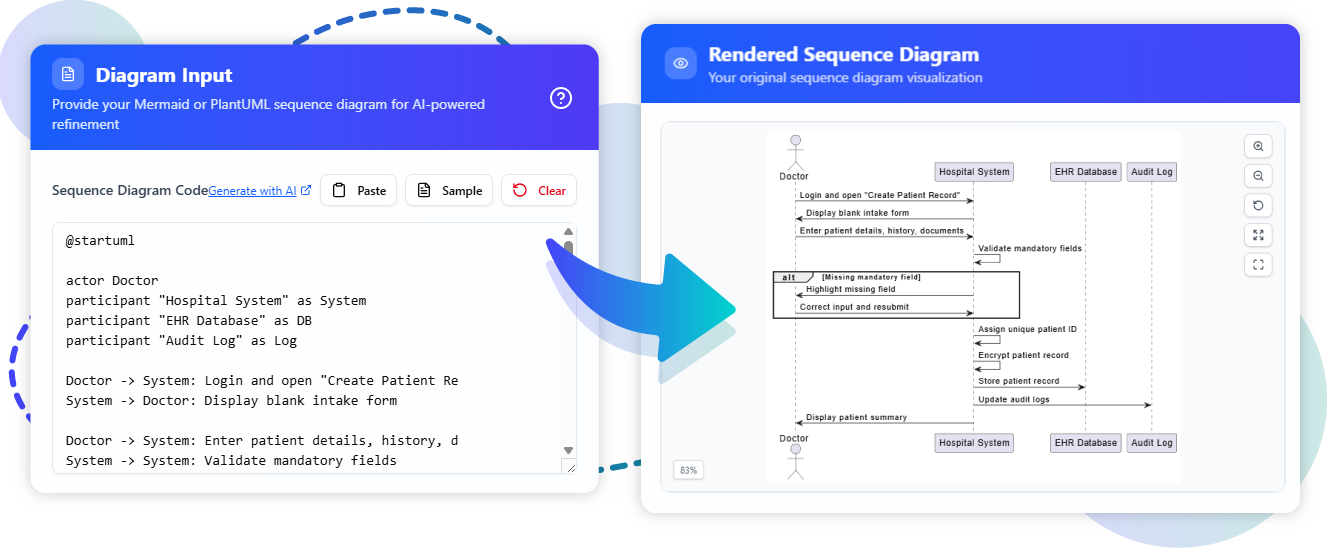Now Reading: Why Sequence Diagrams Are Commonly Stored in PlantUML
-
01
Why Sequence Diagrams Are Commonly Stored in PlantUML
Why Sequence Diagrams Are Commonly Stored in PlantUML
Large systems often start with simple sequence diagrams that outline how an actor interacts with the system. While these diagrams are useful, they can quickly become overloaded and hard to interpret. Decomposition provides a solution by separating user interface components from the system’s business logic, making the design more structured and scalable.

Why PlantUML is Commonly Used
Text-Based and Lightweight
PlantUML diagrams are written in plain text, which means they are easy to create, modify, and share. You can edit a diagram with nothing more than a text editor, and there is no need for heavy design software to make changes.
Version Control Friendly
Because the diagrams are text, they fit naturally into version control systems like Git. Each edit shows up as a line-by-line change, making it simple to track updates, roll back to earlier versions, or collaborate through pull requests.
Easy to Integrate
PlantUML can be rendered in many environments — IDEs, wikis, and documentation systems often support it directly. This makes it easy to keep diagrams close to your code and documentation, instead of stored separately as static files.
Human-Readable Syntax
The PlantUML syntax is intentionally simple and designed to be human-readable. Anyone familiar with UML concepts can quickly learn how to adjust a diagram without a steep learning curve.
Portable and Flexible
PlantUML source files can be rendered into multiple formats like PNG, SVG, or PDF. This gives teams flexibility — text for editing, images for presenting.
Different Roles of PlantUML and Diagram Images
Both PlantUML files and images play important roles in software projects. The difference lies in when and how they are used:
- For collaboration and editing – PlantUML is ideal. It allows team members to refine diagrams together, with every change tracked in source control.
- For presenting to non-technical audiences – Images like PNG or SVG are useful because they require no special tools to view.
- For long-term maintenance – PlantUML serves as the editable “source of truth” that can evolve as the system changes.
- For finalized documentation – Exported images provide a fixed version that can be embedded in reports, manuals, or client deliverables.
Most teams combine both: using PlantUML to store and refine their diagrams, while exporting images when sharing outside the development team.

Why PlantUML is Commonly Used
The Sequence Diagram Refinement Tool accepts PlantUML input for these very reasons. Text-based diagrams are easy for AI to analyze and refine. You can paste or type your PlantUML code, render it, let AI decompose it into view and model objects, and then generate a more detailed diagram. From there, you can export the results as SVG or open them in Visual Paradigm Online for further editing.

